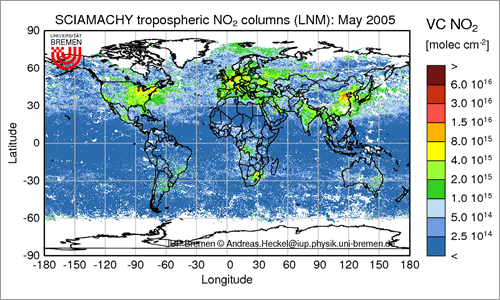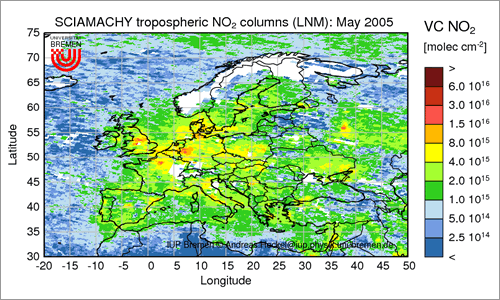The variety of mechanisms for the creation and destruction of NOx means that the concentrations of NOx in the lower troposphere in industrialized areas and near biomass burning sites are very variable.
As a result of the short lifetime of NOx in the lower troposphere (several hours) observations of boundary layer NOx contain important information about emissions. Thus well-equipped ground measuring stations routinely monitor NO2 concentrations. NO can be measured by chemiluminescence. NO2 is first converted to NO, either on a catalyst or by photolysis. NO2 can also be measured by long path DOAS and more recently by Lidar.
However, the local variability means that it is difficult to measure the concentrations of NOx in a global context.
- There are practical limits on the number of point measurements of NOx that can be made at ground level or from aircraft.
- The high variability of NOx levels requires a very good spatial and temporal resolution in observations, but, unfortunately, these are not available either on the land, or on the ocean or high in the atmosphere.
Advantages of remote sensing from space
Remote sensing of NO2 from space offers global coverage combined with a reasonable spatial and temporal resolution of measured data. The entire surface of the Earth can be covered within a few days.

Fig 1.1.5.1: Global distribution of NO2 as measured by the SCIAMACHY instrument in May 2005.
Image: AT2-ELS
The spatial resolution of these measurements is of the order of 30x60 km for the SCIAMACHY instrument, for example.

Fig 1.1.5.2: Distribution of NO2 of Europe as measured by the SCIAMACHY instrument in May 2005.
Image: AT2-ELS